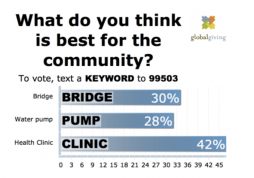What did not work? What were the challenges?:
In terms of the sector, there is a great need for broad-based IT skills as training is still required at most of the partner NGOs. For this reason, training has become a core part of the EMIT product offering.
The lack of network coverage in certain rural areas meant that data capturers had to go to areas with network coverage in order to send their collected forms.
There are challenges involved in the provision of cellphones. Clear policies for cellphone usage are necessary to try and reduce loss. In the near future, the EMIT application will be compatible with all Java enabled cell-phones, meaning that most facilitators will be able to use their personal cellphones, minimizing the cost of providing handsets and the management thereof.
